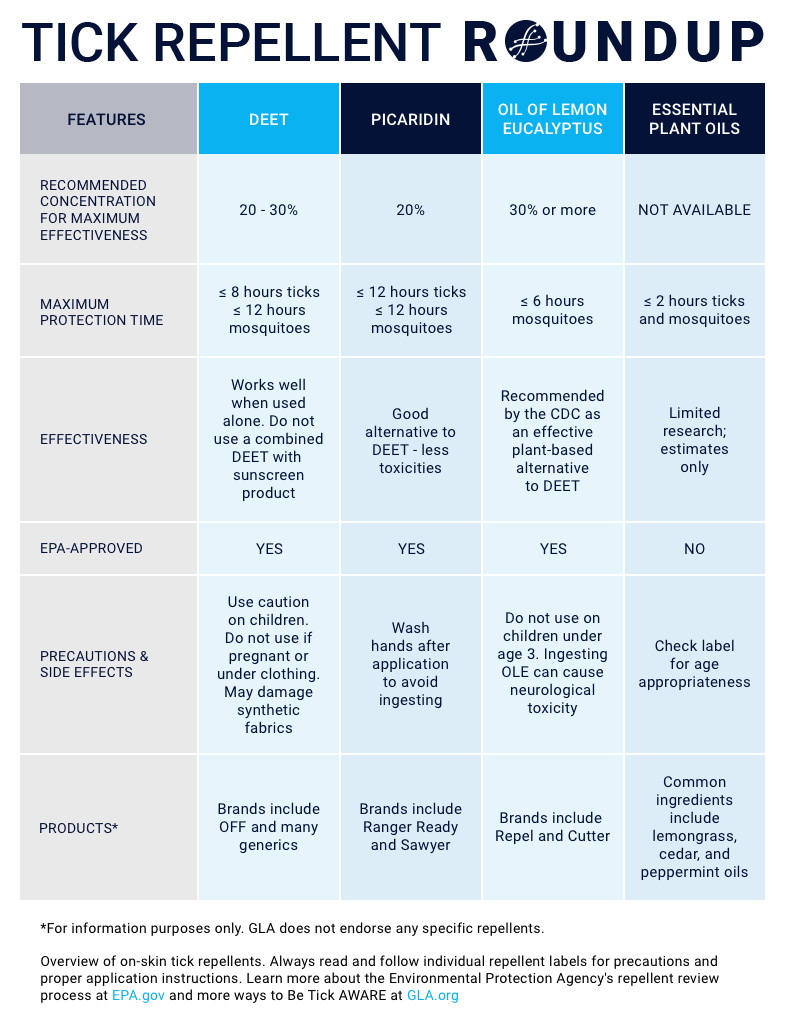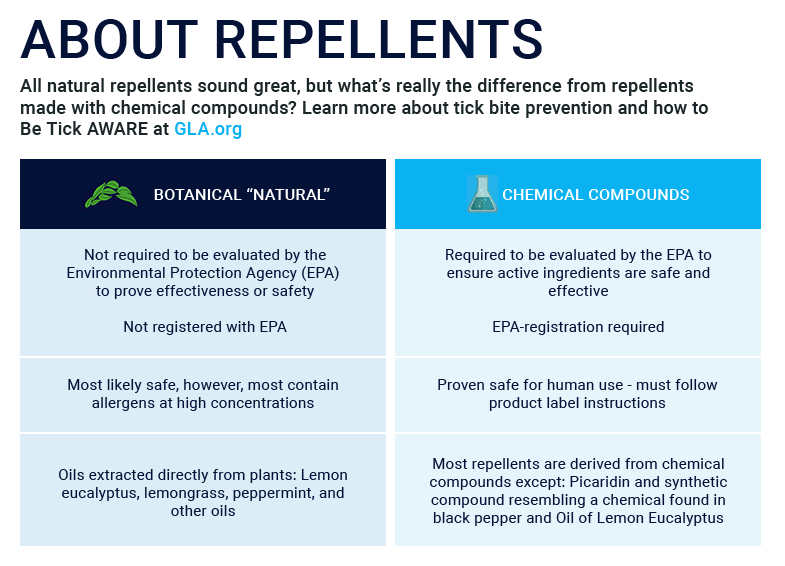About Lyme Disease
GLA Funded Research
Apply for Funding
The best defense against tick bites is a good offense. Always Be Tick AWARE any time you, your family, or pets go outdoors. Using the right tick repellent correctly is an important first step to prevent tick bites and tick-borne illness, like Lyme disease.
There are a variety of tick repellents on the market today. For most effective tick bite prevention, products with the active ingredients DEET, Picaridin, Oil of Lemon Eucalyptus (OLE)*, or Permethrin are most effective. The Center for Disease (CDC) recommends using products containing these active ingredients, that are registered with the U.S. Environmental Protection Agency (EPA).
Use this Tick Repellent Roundup to understand the various on-skin and on-clothing repellent ingredients and their pros and cons. You can download the Tick Repellent RoundUp Table here


Download a copy of the Botanical vs Chemical repellents here
Choosing the right repellents – Things to consider
Wear Protective Clothing
Permethrin is an EPA-approved insecticide that is toxic to a variety of ticks. Wearing permethrin-treating clothing will help repel ticks. You may purchase clothing pre-treated with permethrin or treat clothing yourself.
Permethrin Effectiveness
Research conducted by University of Rhode Island (URI) and CDC shows clothing treated with permethrin had strong toxic effects on ticks.
What you should know
Key Tips:
Important Precautions for Repellent Use:
Resources: EPA’s Find the Repellent that is Right for You
References:
2023 © Copyright Global Lyme Alliance. All rights reserved.
Disclaimer: The above material is provided for information purposes only. The material (a) is not nor should be considered, or used as a substitute for, medical advice, diagnosis, or treatment, nor (b) does it necessarily represent endorsement by or an official position of Global Lyme Alliance, Inc. or any of its directors, officers, advisors or volunteers. Advice on the testing, treatment or care of an individual patient should be obtained through consultation with a physician who has examined that patient or is familiar with that patient’s medical history. Global Lyme Alliance, Inc. makes no warranties of any kind regarding this Website, including as to the accuracy, completeness, currency or reliability of any information contained herein, and all such warranties are expressly disclaimed.